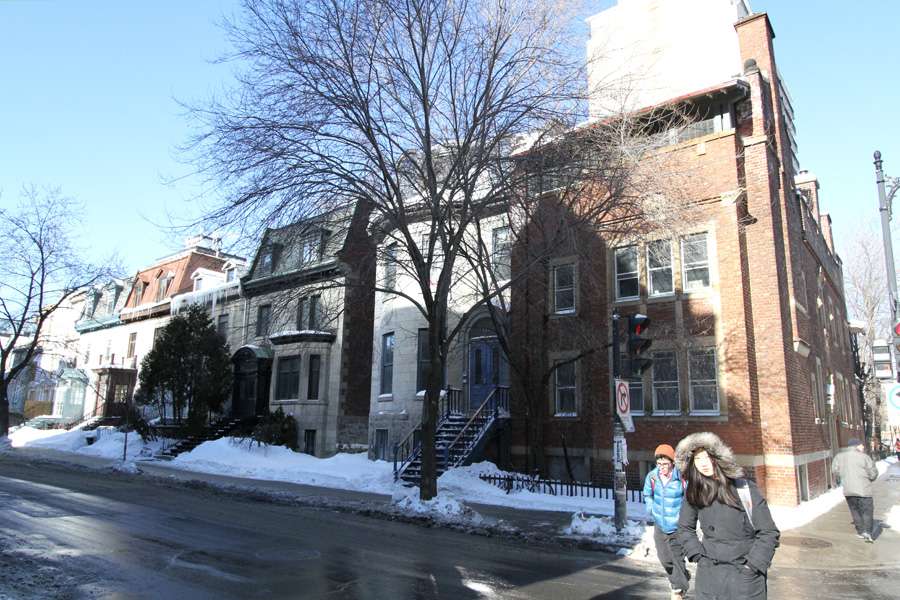As the semester draws to a close, first-year students are busily finalizing their living situations. Arguably the most popular rental neighbourhood for McGill students is the Milton-Parc neighbourhood, colloquially known as the “McGill Ghetto.” Even if students do not live in the neighbourhood, many pass through it during their morning commute, or to access facilities like the McGill Sports Complex on Avenue des Pins. Milton-Parc has become fundamental to McGill campus culture, and an inherent part of the McGill experience.
In 2010, the Students’ Society of McGill University (SSMU) launched the Community Action and Relations Endeavour (CARE), a joint project between SSMU, the Milton-Parc Citizens Committee, and the McGill Dean of Students. At the time of CARE’s launch, Milton-Parc had roughly 1,500 student residents. Although reliable neighbourhood statistics remain impossible to substantiate, due to the lack of Milton-Parc-specific census data, students are still the minority. A decade after the initiative launched, CARE has gradually lost momentum. However, the issues with student-resident relations have not subsided. In order to better educate students on how their presence in Milton-Parc impacts local residents, SSMU must re-examine the CARE initiative, and further work on its implementation.
As of 2007, Milton-Parc had the highest population density in Montreal, with a population of around 11,150 residents. Although the overwhelming majority of Milton-Parc residents are not students, the influx of students is a phenomenon that brings a unique set of challenges for the neighbourhood. CARE stresses the importance of peaceful co-existence, but a walk through the Milton-Parc neighbourhood suggests that students are not adhering to the initiative’s vision. Littering is a widespread issue, and garbage bags are often left open. Items such as perishables or broken glass often disrupt the sidewalks, alongside unwanted furniture and appliances left outside during moving season. Permanent residents have expressed their concerns regarding the pollution of their neighbourhood, but the lack of progress so far symbolizes apathy within the student community to improving relations with them. Besides the physical debris covering the sidewalks, it is not uncommon to hear about complaints of noise, loud and excessive partying, or McGill’s intense drinking culture.
A key weakness of the CARE initiative is that it only superficially addresses the problem between students and permanent residents. Asking students to be responsible, take ownership of their issues, and be aware of their own impact is important. However, these are propositions that can easily be ignored. Although all of the solutions cited in the initiative are completely necessary, they are extremely vague and merely suggestions. Instead of pretending that vague recommendations to university students will fix the problem of coexistence, SSMU should revive the CARE initiative and draft concrete, specific instructions for students wishing to take up residence in the area.
It is not enough to simply create a set of ill-defined suggestions and unfulfilled commitments. SSMU should expand on this initiative by sending a message to students that being a good neighbour is not merely important—it’s our responsibility. McGill and SSMU must continue to work with the Milton-Parc community in order to foster more dialogue. SSMU should look to expanding CARE by creating workshops for students in residence at the end of the Winter semester alongside their apartment hunting workshops, organising workshops for international students out of residence, hosting more inter-community events such as clean-ups, and aiding the Milton-Parc community in their plight to maintain their green spaces. SSMU must make an effort to circulate this information through listservs, at meetings, or by other campus initiatives, in order to reach student communities that are not represented by the rez or international community.
Even if many of the student residents of Milton-Parc are temporary, they still make a mark on the community. Students and long-term residents alike deserve to live in a thriving neighbourhood, and it takes work on both sides to achieve that. Students are community members, neighbours, commuters, or sometimes just parking in the area for the day. Regardless of how they use their Milton-Parc home, and they must treat it with the respect and care that it deserves. The revision of SSMU’s CARE initiative is the first step to facilitating effective change, and to ensure that students fulfill their responsibilities as members of Milton-Parc.









